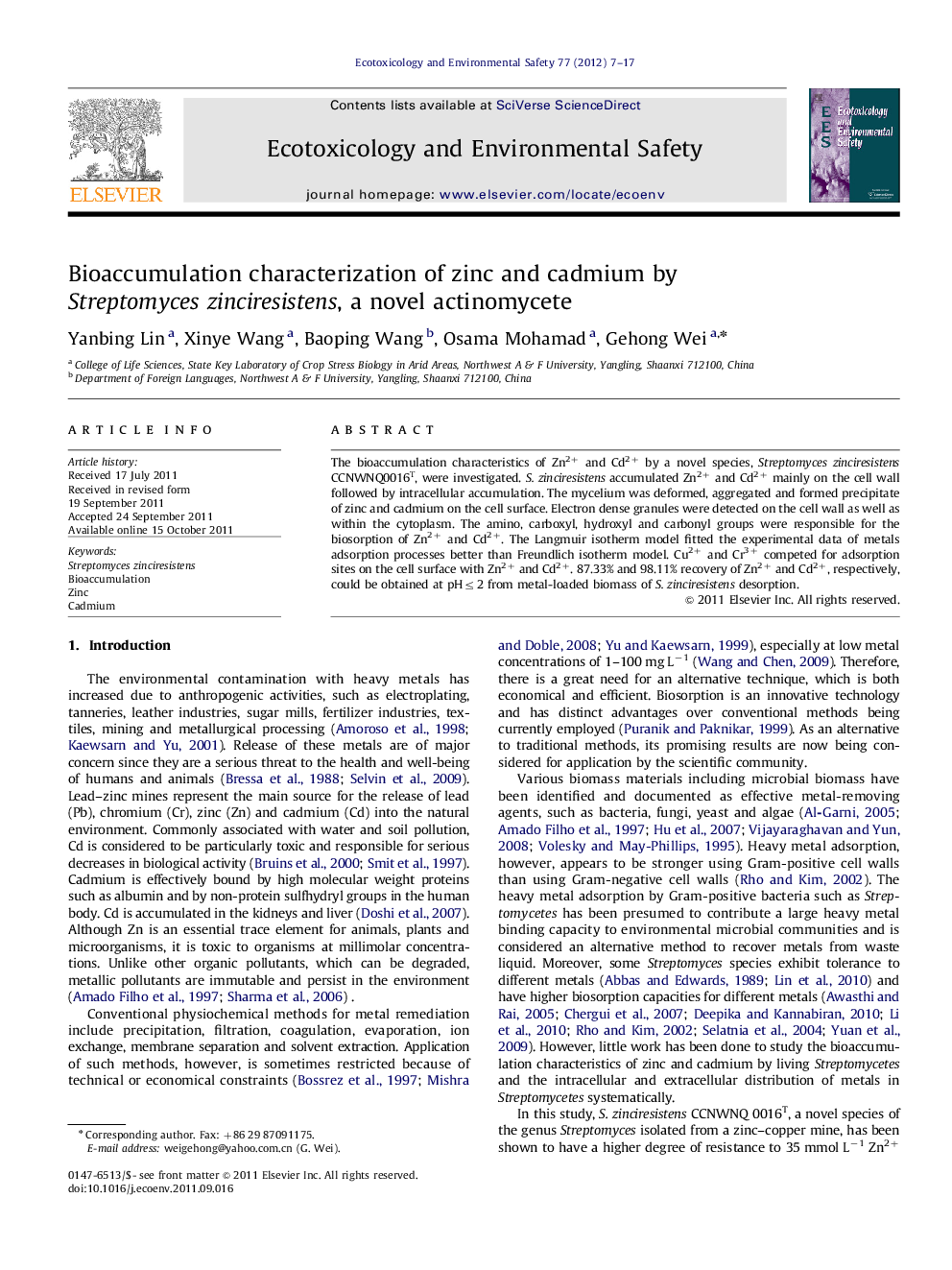| Article ID | Journal | Published Year | Pages | File Type |
|---|---|---|---|---|
| 4420864 | Ecotoxicology and Environmental Safety | 2012 | 11 Pages |
The bioaccumulation characteristics of Zn2+ and Cd2+ by a novel species, Streptomyces zinciresistens CCNWNQ0016T, were investigated. S. zinciresistens accumulated Zn2+ and Cd2+ mainly on the cell wall followed by intracellular accumulation. The mycelium was deformed, aggregated and formed precipitate of zinc and cadmium on the cell surface. Electron dense granules were detected on the cell wall as well as within the cytoplasm. The amino, carboxyl, hydroxyl and carbonyl groups were responsible for the biosorption of Zn2+ and Cd2+. The Langmuir isotherm model fitted the experimental data of metals adsorption processes better than Freundlich isotherm model. Cu2+ and Cr3+ competed for adsorption sites on the cell surface with Zn2+ and Cd2+. 87.33% and 98.11% recovery of Zn2+ and Cd2+, respectively, could be obtained at pH≤2 from metal-loaded biomass of S. zinciresistens desorption.
► A living novel species metals-resistant, Streptomyces zinciresistens, was applied to bioaccumulation of zinc and cadmium. ► Langmuir isotherms model and pseudo-second-order kinetic model were applicable to describing the adsorption system. ► Cu2+ and Cr3+ had strong inhibitory effect on Zn2+/Cd2+ adsorption while the inhibitory effect of Ni2+ is lowest. ► S. zinciresistens accumulated Zn2+/Cd2+ mainly on the cell surface as well as within the cytoplasm by SEM-EDXS and TEM-EDXS. ► The functional groups of S. zinciresistens responsible for the metals binding were O–H, N–H, C=O by FT-IR.
